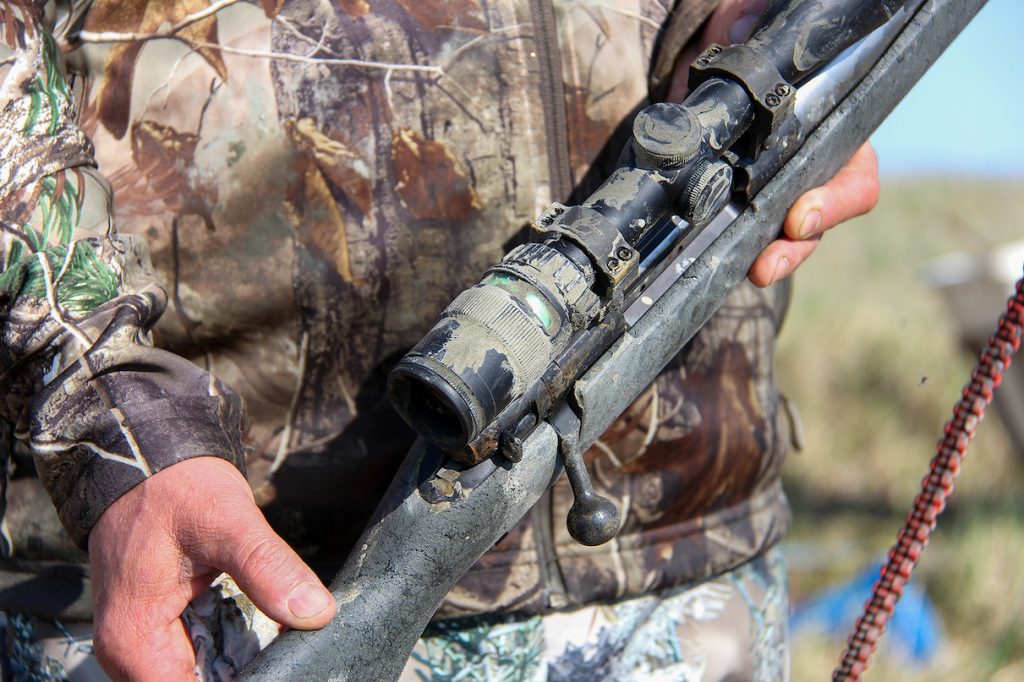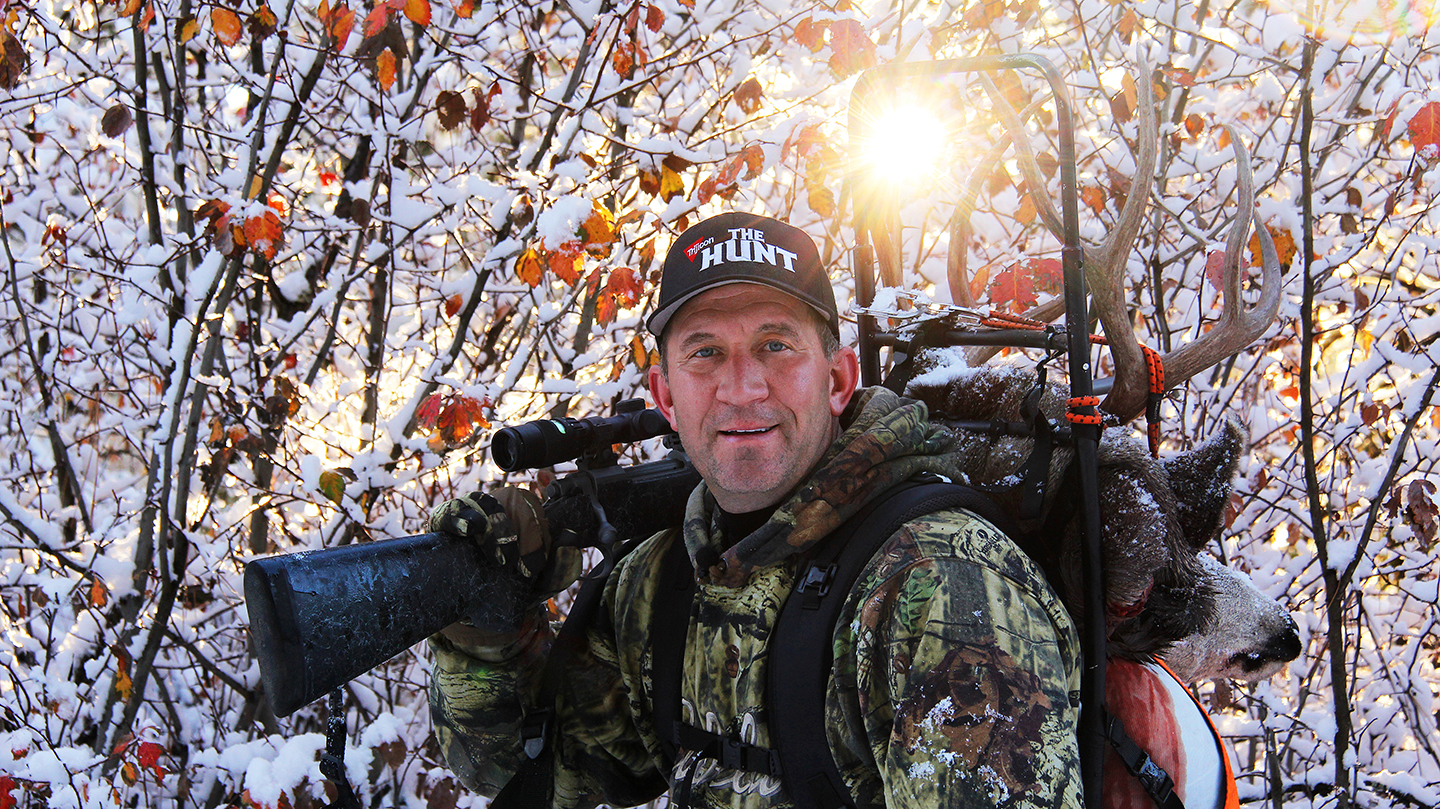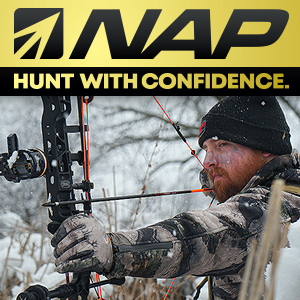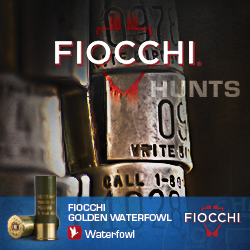Looking for an excellent big-game scope that will always be there for you regardless of what species of game is on the docket or what environment that species dwells in? Our legendary big-game hunter and scope guru, Scott Haugen, has a recommendation, and that recommendation comes from toting a Trijicon around the world.
by Scott Haugen
It’s been almost 20 years since I looked through a Trijicon scope for the first time. I’d been a full-time writer for a few years and recently began hosting TV shows. I knew it was special when I looked through a Trijicon AccuPoint with an illuminated reticle.
Back then, the AccuPoint line of hunting scopes were offered in a post with an illuminated amber triangle at the top of the post. Put the triangle’s apex where you wanted the bullet to hit, and bam, good things happened.
I took Trijicon’s first generation of AccuPoint rifle scopes on many hunts with me throughout the West, Africa, and the South Pacific. At one time in my career, I was hosting two TV shows. This meant I had to deliver 52 episodes — 26 for each show — during the year. This equated to going on nearly 60 big game hunts a year, sometimes more depending on success rates. This is when I quickly realized that missing shots at big game cost me, my camera crew, even the production team back home, time and money. I couldn’t afford to miss.

Soon, Trijicon came out with a tritium, fiber optic crosshair scope featuring an illuminated dot in the center and posts in a range of powers. Things changed for me when the green dot crosshair and red triangle post reticles hit the market. I made 54 one-shot kills in a row with these two reticles in one season. Then I missed a shot before getting to 72 animals. This isn’t bragging; it’s showing how effective a good scope can be and what an impact Trijicon’s line of battery-free, illuminated reticles has had on my hunting success. And for those wondering, I’m not paid a dime to promote them.
I’ve been in many big game camps during my many years of hunting worldwide. One thing that’s always amazed me is the number of hunters who are okay with missing shots. I used to be that way. Not anymore. It could be because I was under so much pressure not to miss. Today, if I miss a shot, I’m surprised and shocked. I quickly learned that with a Trijicon AccuPoint and a solid rest, there was no reason to miss. I never take a shot hoping to hit an animal. I only pull the trigger if I’m confident I’ll hit my target, and when I do miss, I’m dumbfounded but stop right then to figure out why.
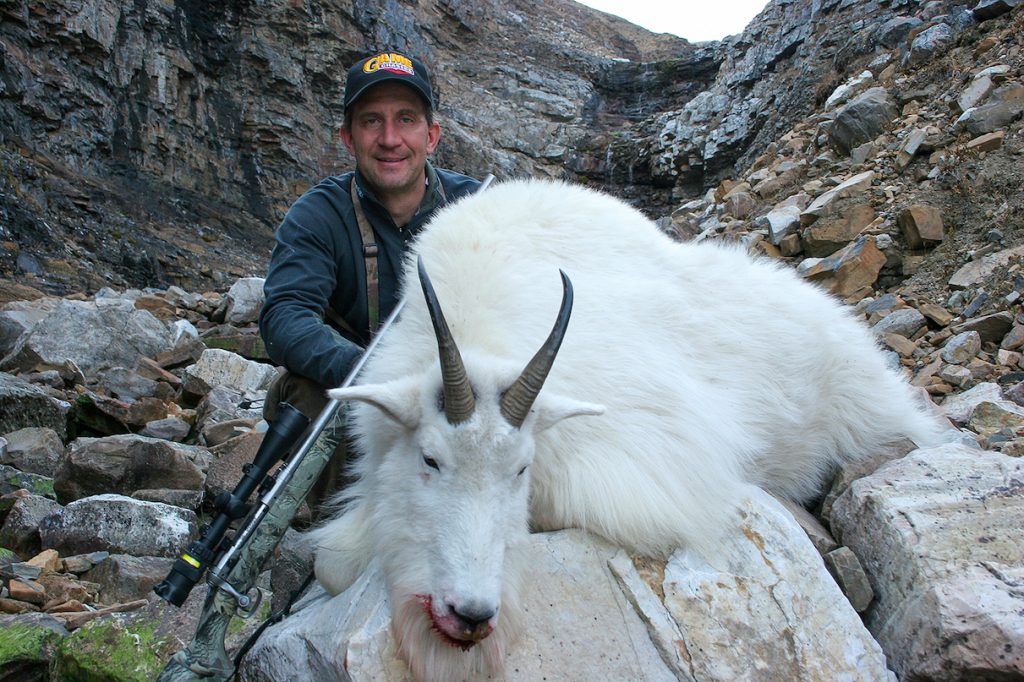
The animal I see missed and crippled by hunters a lot is the black bear. I’m convinced this is because they’re putting the black crosshairs of their scope on the black body of a bear and pulling the trigger. Many get in a rush, failing to place the crosshair precisely. With a Trijicon AccuPoint, the illuminated reticle makes target acquisition fast and unquestionable. I’ve taken several black bears in dark timber, low-light conditions, even amid driving rain storms with an AccuPoint. Hit properly through both lungs, bears die very quickly.
I’ve also taken big brown bears in Alaska using a 3×9 AccuPoint. I like a standard duplex crosshair with a green dot as my eye quickly picks it up in the varied habitats I’ve hunted worldwide, from river-bottom whitetails to mountain goats on shale cliffs to African plains game.
I know many outfitters in Alaska who fit their big bore guns with Trijicon’s 1×6 AccuPoint in a triangle post-reticle. This reticle is larger than the dot in a crosshair scope, making for fast target pickup on a crippled bear in thick, dark brush.
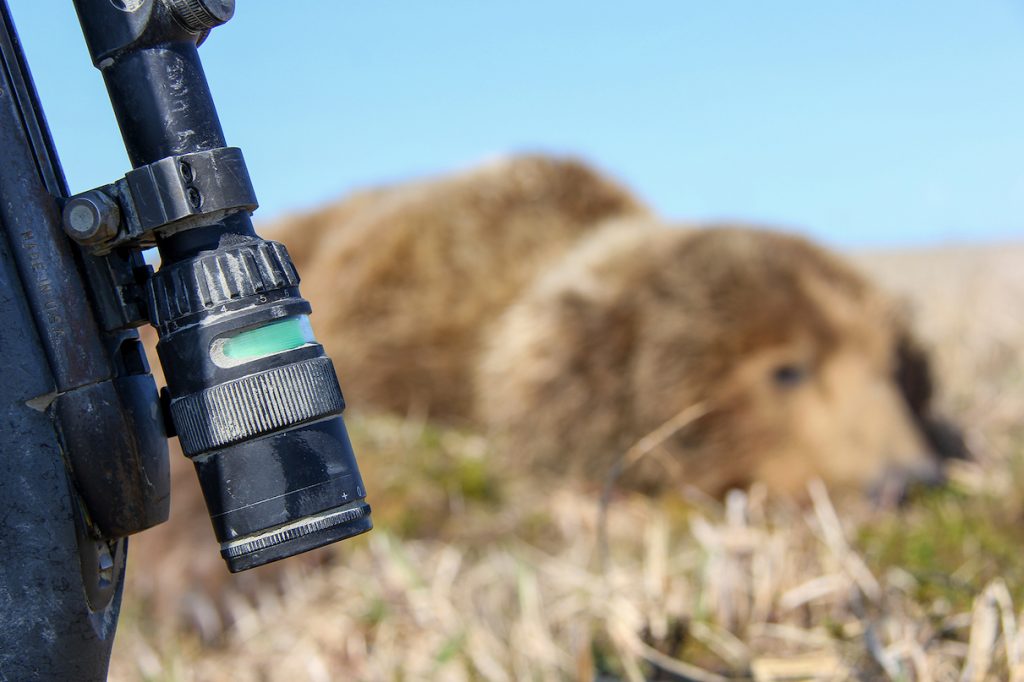
The same is true in Africa, where many PHs I know have gone to an illuminate post reticle when guiding hunts for dangerous game. Should a client cripple an animal, the 1×6 scope is easy to control the power of, making for safe and efficient follow-up shots.
When hunting dangerous game in Africa or bears in dense, green cover, a red illuminated post reticle is the choice of many, as it stands out amid the green hues. I shot an incredible Cape buffalo in Zimbabwe with a 1×4 AccuPoint.
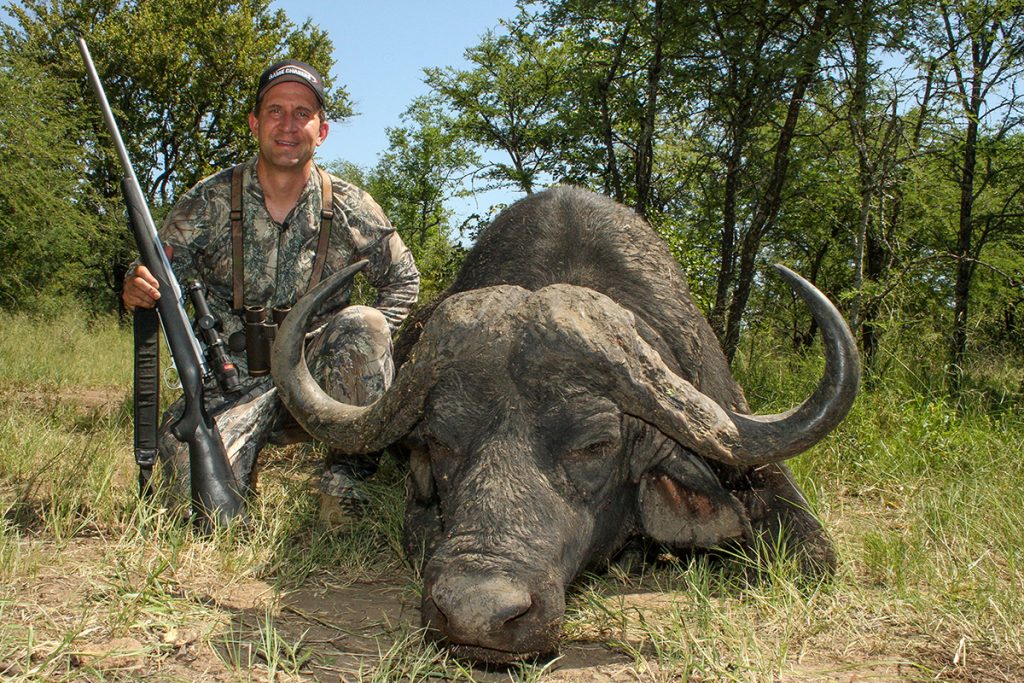
From the most rugged peaks chasing Himalayan tahr and chamois in New Zealand to numerous horseback hunts throughout the West and Canada, to coastal brown bears and wet, brutal elk hunts in the Pacific Northwest, I’ve put many models of Trijicon scopes to the test over the years. From 115-degree temperatures in Africa to -20-degrees in Alaska, in torrential downpours and heavy snow, my Trijicon scopes have never failed me.
Once in Alaska, I got stuck in soft mud when hunting brown bears in the tidal flats. I was sinking, and both legs were cramping. It was not good. I couldn’t escape my waders and used my rifle to free myself. When I finally escaped Mother Nature’s death trap, my scope was covered in thick mud. I had nothing besides salt water to clean it. So, I used the salt water and then rinsed the scope off with fresh water from my pack. The scope performed flawlessly on that hunt and many others after it.
Then there was a hunt in Sonora, Mexico. We were on a high rack, driving around looking for muleys and Coues deer. We were stopped, the gun was unloaded, and I went to pass it to my guide buddy. Somehow the sling got caught on the rack and yanked the gun from my hand; shame on me for not having a better grip. The gun toppled end over end, hitting the ground scope-first. The 3×9 AccuPoint was dented, and I figured, done for. But it hit dimes when I shot it downrange at a paper target and then reshot it. I went on to kill a nice mule deer and record-class Coues with it.
I’ll never forget a wilderness hunt when my horse went berserk. Fortunately, I wasn’t on it; I was glassing for elk. After kicking, whirling, and sprinting through the forest, the horse piled up beneath a giant root wad of a fallen tree. I was certain my gun and scope were ruined; I was amazed to pull it from the scabbard and have it perfectly holding zero when I shot it.
If you were to look in my gun vaults, you’d find several rifles, and every one of them has a Trijicon scope, even my .22s. I own no other scopes, and I’ve used different scopes over the years, and, of course, there are some good ones. But for the type of hunting I do, in such a range of conditions, amid some of the world’s most harsh and challenging elements, Trijicon’s AccuPoint is my go-to scope.
I’ve shot most of the Trijicon line, including long-range models. I once took a blacktail deer at just under 1,000 yards, using one of their glass-etched scopes. The clarity of that thing was mind-boggling. The side-to-side clarity in all of the AccuPoints is impressive, and nowhere is this more evident than in low-light settings or amid thick cover.
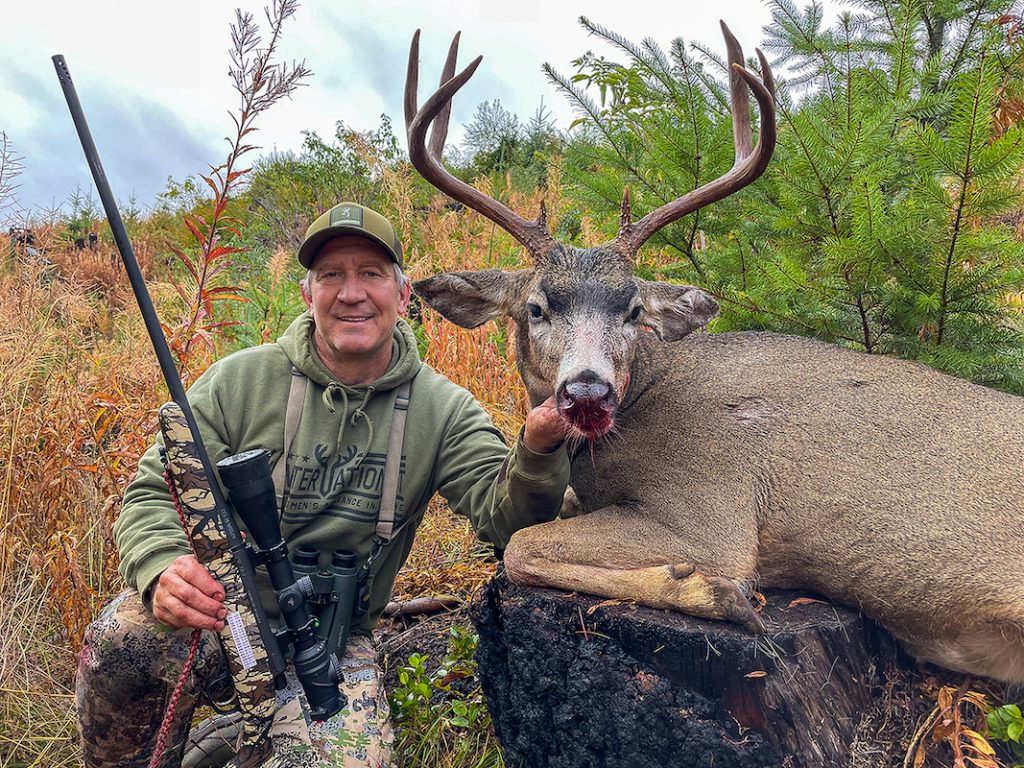
I was on a high-volume ground squirrel hunt with some buddies a few years ago. When I pulled out my Browning lever action .22 topped with a 3×9 AccuPoint, one of them looked at me and asked, “You put a Trijicon on a .22?” It was more of a statement than a question. When I handed him the gun to shoot a squirrel, he instantly understood why I put the scope on the rifle. Making my living with these scopes, I practiced with them all I could, including varmint shoots, where I could gain valuable experience shooting several hundred squirrels in a day with it.
Trijicon continues to expand the AccuPoint line, offering specialized scopes for all hunters. Trijicon’s dedication to quality is impressive. Having taken scores of big game animals worldwide with them, I can attest to their ease of operation and ability to perform without fail.
